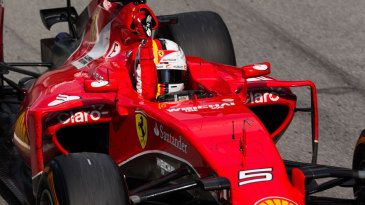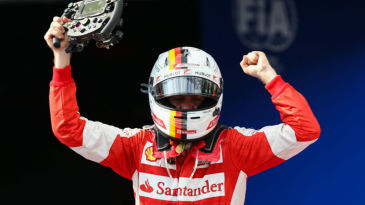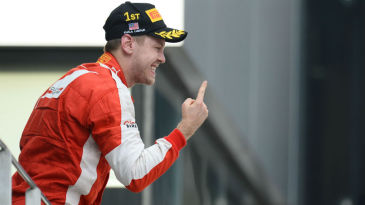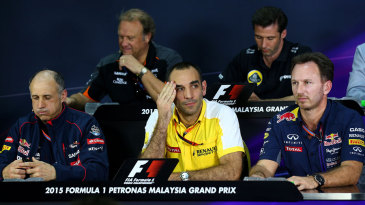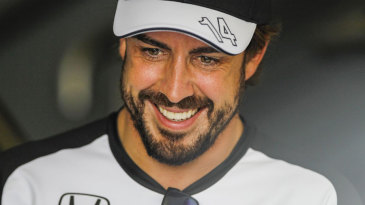
| Year | Engine | Driver | Race | Start | Won | Pod | Class | Best | 1+2 | Pole | Front | Best | Lap | Pts | Pos | ||||
|---|---|---|---|---|---|---|---|---|---|---|---|---|---|---|---|---|---|---|---|
| 1950 | Maserati | Prince Bira, F Bonetto, A Branca, AL Chiron, JG Fry, F González, E de Graffenried, DA Hampshire, D Murray, C Pagani, R Parnell, A Pian, P Pietsch, F Rol, B Shawe-Taylor | 6 | 29 | 0 | 1 | 12 | 3 | 0 | 0 | 1 | 3 | 0 | 0 | - | ||||
| Milano | F Bonetto, G Comotti | 2 | 2 | 0 | 0 | 0 | - | 0 | 0 | 0 | 10 | 0 | 0 | - | |||||
| Offenhauser | FL Agabashian, HE Banks, T Webb | 1 | 2 | 0 | 0 | 1 | 20 | 0 | 0 | 0 | 14 | 0 | 0 | - | |||||
| 1951 | Maserati | A Branca, AL Chiron, P Fotheringham-Parker, F Godia, E de Graffenried, J James, J Jover, D Murray, P Pietsch, H Schell | 5 | 10 | 0 | 0 | 3 | 7 | 0 | 0 | 0 | 15 | 0 | 0 | - | ||||
| Milano | OA Marimón | 1 | 1 | 0 | 0 | 0 | - | 0 | 0 | 0 | 15 | 0 | 0 | - | |||||
| Offenhauser | J McDowell | 1 | 1 | 0 | 0 | 0 | - | 0 | 0 | 0 | 26 | 0 | 0 | - | |||||
| Osca | Prince Bira | 1 | 1 | 0 | 0 | 0 | - | 0 | 0 | 0 | 19 | 0 | 0 | - | |||||
| 1952 | Maserati | LERB Bianco, F Bonetto, ED Cantoni, P Etancelin, J Flinterman, F González, FS Landi, F Rol | 5 | 15 | 0 | 1 | 7 | 2 | 0 | 0 | 0 | 5 | 1 | 0 | - | ||||
| Plate | AA Crespo, E de Graffenried, H Schell | 3 | 6 | 0 | 0 | 3 | 6 | 0 | 0 | 0 | 8 | 0 | 0 | - | |||||
| 1953 | Maserati | Prince Bira, F Bonetto, OJ Claes, JM Fangio, OA Galvez, F González, E de Graffenried, FS Landi, H Lang, S Mantovani, OA Marimón, L Musso | 8 | 40 | 1 | 8 | 21 | 1 | 0 | 2 | 10 | 1 | 4 | 0 | - | ||||
| 1954 | Maserati | A Ascari, Prince Bira, J Daponte, JM Fangio, R Flockhart, F Godia, E de Graffenried, S Mantovani, OA Marimón, CA Menditeguy, R Mieres, SC Moss, L Musso, G de Riu, L Rosier, R Salvadori, H Schell, L Villoresi, O Volonterio, K Wharton | 8 | 57 | 2 | 5 | 29 | 1 | 0 | 1 | 8 | 1 | 2 | 0 | - | ||||
| 1955 | Maserati | JM Behra, C Bucci, OJ Claes, P Collins, J Fitch, HH Gould, L Macklin, S Mantovani, CA Menditeguy, R Mieres, L Musso, C Perdisa, L Rosier, R Salvadori, H Schell, A Simon, A Uria, P Walker | 6 | 39 | 0 | 2 | 18 | 3 | 0 | 0 | 2 | 3 | 1 | 0 | - | ||||
| 1956 | Maserati | JM Behra, J Bonnier, JA Brabham, AL Chiron, G Gerini, F Godia, F González, OM Gonzalez, HH Gould, E de Graffenried, BH Halford, M Hawthorn, FS Landi, U Maglioli, CA Menditeguy, SC Moss, C Perdisa, L Piotti, L Rosier, R Salvadori, H Schell, A Simon, P Taruffi, A Uria, L Villoresi, O Volonterio | 7 | 60 | 2 | 10 | 31 | 1 | 0 | 1 | 5 | 1 | 3 | 0 | - | ||||
| 1957 | Maserati | JM Behra, J Bonnier, ILJ Bueb, JM Fangio, F Godia, HH Gould, M Gregory, BH Halford, H Herrmann, CA Menditeguy, SC Moss, L Piotti, G Scarlatti, H Schell, A Simon, O Volonterio | 7 | 54 | 4 | 10 | 29 | 1 | 1 | 5 | 11 | 1 | 3 | 0 | - | ||||
| 1958 | Maserati | H Allison, JM Behra, J Bonnier, G Cabianca, AL Chiron, MT de Filippis, JM Fangio, G Gerini, F Godia, HH Gould, M Gregory, H Herrmann, P Hill, TK Kavanagh, CA Menditeguy, T Ruttman, G Scarlatti, H Schell, W Seidel, C Shelby, L Taramazzo, A Testut, M Trintignant | 10 | 43 | 0 | 0 | 20 | 4 | 0 | 1 | 2 | 1 | 1 | 6 | 5 | ||||
| 1959 | Maserati | G Cabianca, PJ Cade, A Fontes, JCPAJH Godin de Beaufort, FJCT d'Orey, G Scarlatti, A Testut | 4 | 5 | 0 | 0 | 4 | 8 | 0 | 0 | 0 | 18 | 0 | 0 | - | ||||
| 1960 | Maserati | EM Chimeri, A Creus, R Drake, NM Estéfano, HH Gould, G Munaron, G Scarlatti | 2 | 6 | 0 | 0 | 3 | 13 | 0 | 0 | 0 | 18 | 0 | 0 | - | ||||
| Total | 71 | 371 | 9 | 37 | 181 | 1 | 1 | 10 | 39 | 1 | 15 |
| Race | Circuit | Date | ||
|---|---|---|---|---|
| First race | British Grand Prix | Silverstone | May 13, 1950 | Race results |
| Last race | United States Grand Prix | Riverside | November 20, 1960 | Race results |
The Maserati brothers were involved in early Italian motor sport before setting up their first manufacturing business, making sparking plugs, before the First World War.
When hostilities ended, Alfieri Maserati raced his own special and then the brothers embarked on building a straight-eight engine for the Diatto Grand Prix car. They bought it and modified it to conform to the 1926 regulations, with Alfieri taking a class win in that year's Targa Florio.
Maserati then did some twin-engined experimentation before building the 8C-2500 and 2800 chassis. The 8CM was built to take the fight to rival Alfa Romeo's P3 and was the start of a rivalry between the two marques that would continue until after the Second World War. Baconin Borzacchini was an early Maserati faithful, and was joined in an 8CM by Tazio Nuvolari in 1933.
One of Alfa Romeo's greats was Giuseppe Campari, who had joined Alfa Romeo in his teens as a test driver. He was a great music and opera lover and was married to the singer Lina Cavalleri. At Monza, Campari said that he would retire at the end of the meeting. Sadly, he was involved in a tussle with Borzacchini's Maserati, during which they both hit a patch of oil and crashed fatally. Bugatti driver Count Czaikowski hit the same spot and he was also killed.
Maserati could not match the German challenge of the mid- and late 1930s and the company was taken over by Cavallieri Adolfo Orsi, with the Maserati brothers remaining as part of the firm. In the early 1940s, Maserati moved from Bologna to Modena.
The Maserati 4CLT was a competitive proposition just after the Second World War, if a little underpowered. The brothers then began work on a sports car before leaving to found the Osca marque. The engine from this car was the basis of a Formula Two car which became eligible for the World Championship when Formula One fell by the wayside in 1952-53. This was a time of Ferrari domination, but Fangio won for Maserati at the Italian Grand Prix at Monza.
Maserati looked good for the newly introduced 2.5-litre formula of 1954, but once again Mercedes was to launch a major onslaught and spoil the Italian party. Fangio won the first two grands prix for Maserati in 1954, while he waited for the Mercedes programme to come on-stream. He was driving the 250F, which was destined to become the best-known Maserati ever.
The 250F proved a very popular car among privateers and was progressively improved, with various weight-saving exercises being carried out. With Mercedes withdrawing, Stirling Moss won two races for Maserati in 1956, while Fangio took his fourth world title for Ferrari. The next year, Fangio, disgruntled with the politicking at Ferrari, returned to Maserati. He won four races to collect his fifth title.
He did it with one of the most memorable comeback drives in motor racing history, at the Nurburgring. With one of the hub nuts lost during his pit stop, Fangio rejoined the race about 45 seconds behind the Ferraris of Mike Hawthorn and Peter Collins. On the last lap, he passed both to win by just over three seconds. Afterwards, he said: "I don't ever want to have to drive like that again."
Maserati also gave Fangio his last grand prix, at Reims in 1958, although by that time the factory team was no more. Despite a successful 1957, Maserati was in big financial trouble and the 250F continued to race only in private hands until it became outmoded by mid-engined development.
Reproduced from The Ultimate Encyclopedia of Formula One published by Carlton Books
- The birth of an icon (January 16, 2011)
- Hawthorn wins on Fangio's farewell (July 7, 1958)
- One-eyed Moss claims first win for Cooper (January 19, 1958)
- Moss completes season with win in Italy (September 8, 1957)
